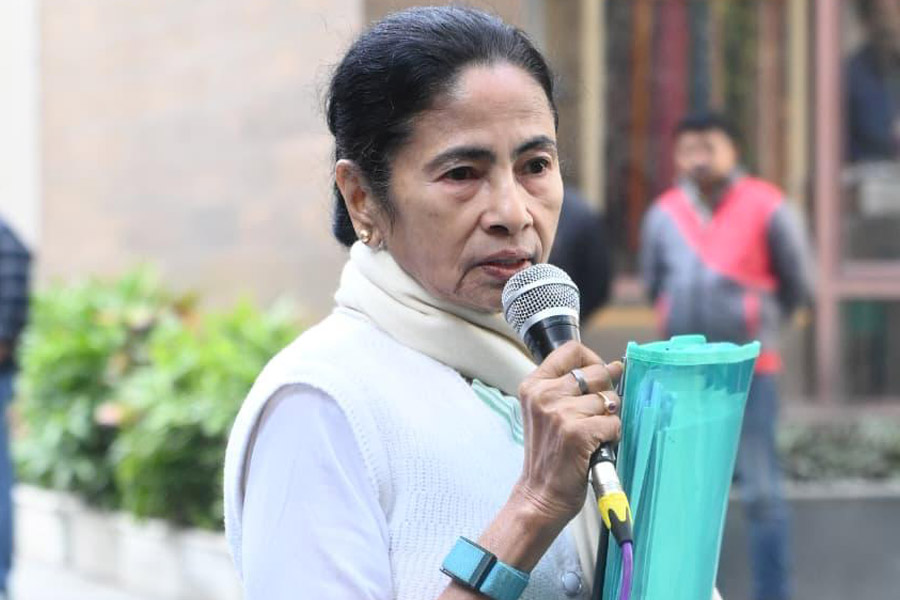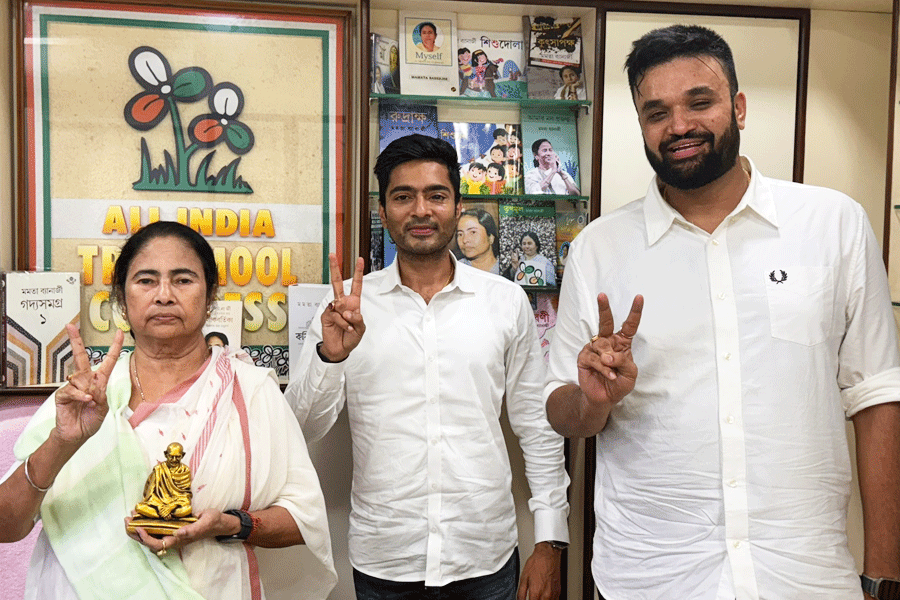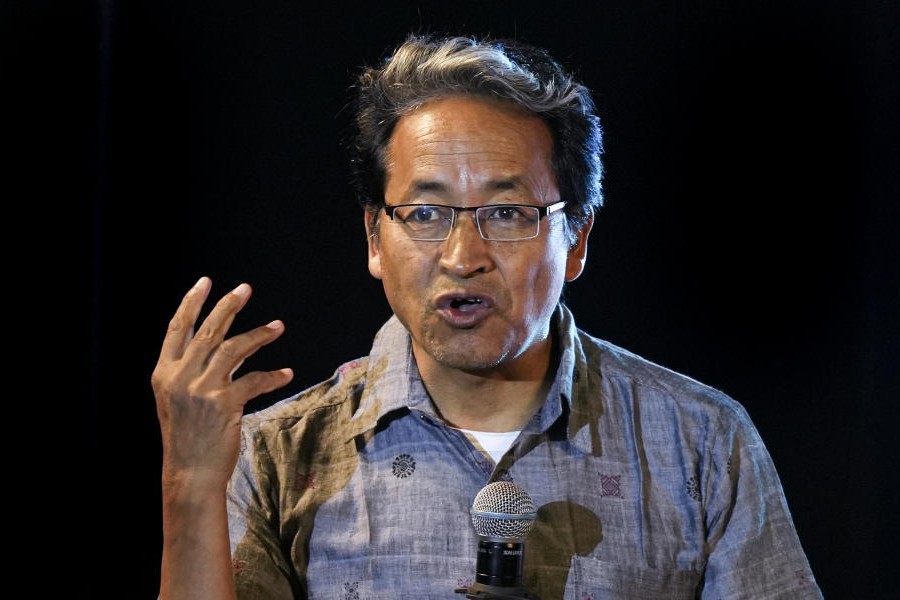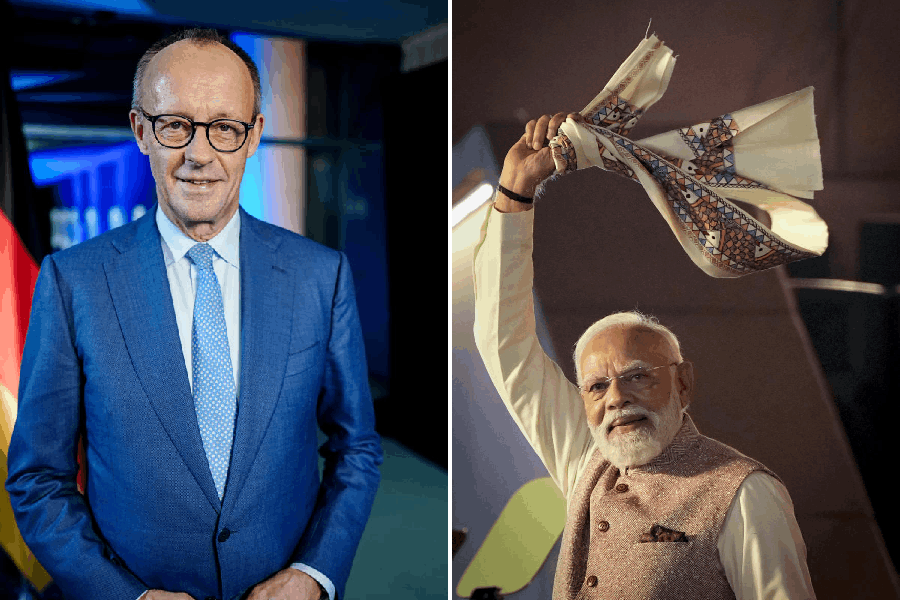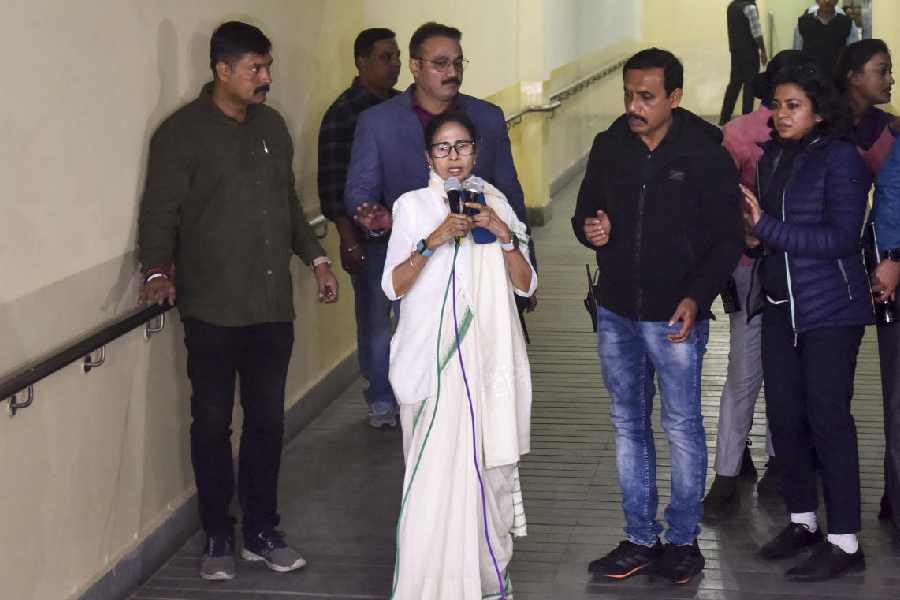 |
| Vilayat Khan’s son Hidayat with the sitar maestro’s body after it was brought to Calcutta from Mumbai on Sunday evening. The body will be kept at Rabindra Sadan on Monday morning for people to pay homage. Picture by Aranya Sen |
Ustad Vilayat Khan was definitely the most technically accomplished sitar player of post-Independence India. The skills and technical ability of his predecessors, including his grandfather Ustad Imdad Khan and his father Ustad Enayat Khan, to the extent captured on the 78 rpm shellac discs, appear elementary when compared to his.
True, Vilayat Khan did not play the rapid-fire multi-stroke taan-toda in which his father excelled; but it can be conjectured with a fair amount of certainty that this was because he did not want to enter an area already developed to the hilt by Ustad Enayat Khan. The high-speed one-stroke-per-note (ekhara) taankari or the deflected khayal-style taankari of Vilayat Khan’s heyday were probably things that none of his recorded predecessors and their peers could have imagined as being possible.
Apart from the old-style multi-stroke taan-toda, there was no aspect of sitar technique in which any sitar player, including the shellac recorded ones, could equal Vilayat Khan’s mastery in his heyday..
Vilayat Khan created his own style and format of sitar playing called Vilayatkhani Baaz. This is far more comprehensive, advanced and attractive than the traditional ones. Since this style of sitar playing followed the nuances of classical vocal music and called for long deflections and fast taan movements, Vilayat Khan designed a new model of the sitar. This was as innovative technically as the one designed by his peer, Pandit Ravi Shankar. These two are the standard sitar models today; having eclipsed the older models. Similarly, the Vilayatkhani Baaz is one of the two dominant sitar styles today, the other being that of Pandit Ravi Shankar.
The Vilayat Khan style of sitar playing and its medium, the six-string Vilayat Khan sitar model, took into account and exploited modern electrical (and more recently electronic) sound amplification technology and was therefore more advanced and more pleasant sounding than the older styles and sitar models. Helped by the amplification technology and the specially honed sitar bridge and heavy gauge strings, Vilayat Khan could reproduce the subtlest nuances of vocal music by skilfully tugging the main string of the sitar laterally from special fret positions even in the largest concert hall. The elimination of one of the jodi strings and the bass pancham string in the Vilayat Khan sitar model facilitated this special manner of sitar playing. The elimination of the first increased the space between the main playing string (called the nayaki) and the remaining jodi, thus cutting out the jangle that tended to swallow up fast taans in the traditional model, and the second, apart from serving a similar purpose by cutting out the bass boom, also made room for the addition of a thinner drone string tuned usually to the major third which, struck in unison with the drone pancham (major treble fifth), created the effect of the basic major triad (C E G) that sort of provide a harmonic backdrop for the music played on the two main melody strings.
Vilayat Khan thus undertook not only the development and expansion of the traditional sitar style to areas earlier not even thought of, but also redesigned the sitar itself to facilitate its transmission. He can therefore be compared to an impossible Grand Prix driver who also designed his own Formula One racing car to suit his style of driving and then broke all records!
In the first half of his long and glorious career, Ustad Vilayat Khan broke all records of innovative and exceptionally skilled sitar playing and possibly achieved the most astounding instrumental portrayals of ragas like Darbari Kanada, Yaman, Puria, Shankara, Bhankar, Desh and Tilak Kamod. His thumri-style projection of lighter ragas like Mishra Bhairavi, Mishra Pilu, Khammaj, Manjh Khammaj, Panchamse Gara and Pahadi is also now history: the kind of history that does not repeat itself.
Since his characteristic style depended heavily on skills that were in turn dependent on physical ability, it suffered as Vilayat Khan aged.
The ustad in the final period of his career had become a celebrity people filled up auditoriums to see: what he played was secondary. Vilayat Khan most probably understood this and rarely played seriously. When he did, there were few who could match him.
Nilaksha Gupta


